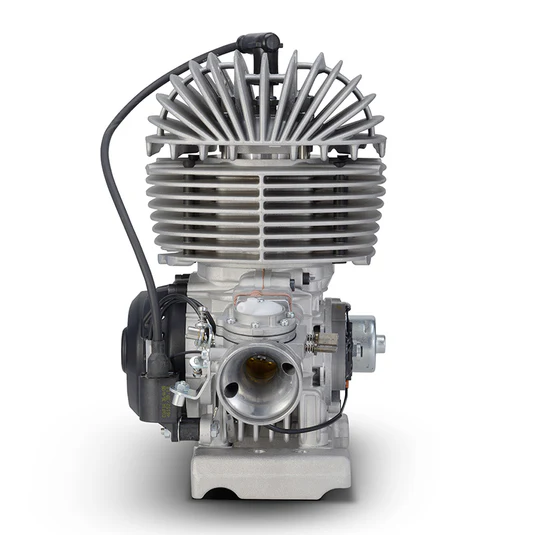
In the quest for cleaner and more efficient energy sources, scientists and engineers are constantly exploring innovative technologies to meet the growing demand for sustainable power. One such groundbreaking technology is the vortex engine. This revolutionary approach to energy generation has the potential to reshape the landscape of renewable energy. In this article, we will delve into what vortex engines are, how they work, and the profound impact they could have on the future of energy production.
What is a Vortex Engine?
At its core, a vortex engine is a device that converts thermal energy into mechanical energy using controlled vortex flows. Unlike traditional engines that rely on combustion, vortex engines harness the power of swirling air or gases to generate electricity. The concept behind this technology is rooted in the principles of thermodynamics and fluid dynamics, making it a fascinating blend of science and engineering.
How Does It Work?
The operation of a vortex engine can be broken down into several key steps:
1. Vortex Formation
The process begins with the creation of a vortex, which is a spinning motion of fluid or gas. This is achieved by introducing a high-velocity jet of air or gas into a chamber. As the jet enters the chamber, it begins to rotate, forming a stable vortex.
2. Thermal Exchange
Next, the vortex is heated through thermal exchange with an external heat source, such as solar energy or waste heat from industrial processes. This causes the air or gas in the vortex to expand and increase in velocity, further intensifying the swirling motion.
3. Mechanical Energy Conversion
The high-velocity, hot gases in the vortex are then directed through a turbine or other mechanical system, where their kinetic energy is converted into mechanical energy. This mechanical energy can be used to drive an electric generator, producing electricity.
4. Recycling and Sustainability
One of the most remarkable features of vortex engines is their ability to operate in a closed-loop system. After passing through the turbine, the cooled gases can be recirculated back into the vortex chamber, where they are reheated and reused. This not only enhances the efficiency of the system but also minimizes the environmental impact by reducing the need for additional fuel or resources.
Advantages of Vortex Engines
1. Efficiency
Vortex engines have the potential to achieve high levels of efficiency compared to traditional combustion engines. By harnessing the power of vortex flows, these engines can convert a larger proportion of thermal energy into mechanical energy, leading to greater overall efficiency and reduced energy waste.
2. Clean Energy
One of the most appealing aspects of vortex engines is their environmental friendliness. Unlike fossil fuel-based power plants, vortex engines produce no harmful emissions, making them a clean and sustainable energy solution. This can help to mitigate the negative impact of energy generation on the environment and contribute to global efforts to combat climate change.
3. Versatility
Vortex engines are highly versatile and can be adapted to a variety of applications and scales, from small-scale power generation for individual households to large-scale industrial applications. This flexibility makes them an attractive option for a wide range of energy needs and settings.
Potential Applications
The potential applications of vortex engines are vast and diverse, spanning various sectors and industries:
1. Renewable Energy Generation
Vortex engines could play a significant role in expanding the capacity of renewable energy sources, such as solar and geothermal power. By providing a more efficient and scalable method for converting thermal energy into electricity, vortex engines could help to overcome some of the limitations of current renewable energy technologies and accelerate the transition to a cleaner and more sustainable energy grid.
2. Waste Heat Recovery
In industrial settings, vortex engines could be used to recover waste heat from manufacturing processes and convert it into usable energy. This not only improves the overall efficiency of industrial operations but also reduces energy costs and environmental impact.
3. Distributed Power Generation
Vortex engines can be deployed in decentralized or off-grid settings to provide reliable and sustainable power to remote areas or communities. This could be particularly beneficial in regions with limited access to traditional energy infrastructure, helping to improve living standards and stimulate economic development.
Challenges and Future Prospects
While vortex engines hold great promise for revolutionizing energy generation, there are still several challenges to overcome, including technological development, scalability, and cost-effectiveness. Ongoing research and development efforts are focused on optimizing the design and efficiency of vortex engines and exploring new materials and technologies to enhance their performance.
Despite these challenges, the potential benefits of vortex engines are too significant to ignore. With continued innovation and investment, vortex engines could become a key player in the transition to a more sustainable and environmentally friendly energy system.
Conclusion
Vortex engines represent a groundbreaking approach to energy generation that has the potential to revolutionize the way we produce and consume power. By harnessing the power of controlled vortex flows, these innovative engines offer a highly efficient, clean, and versatile solution for converting thermal energy into mechanical energy and electricity.
While there are still challenges to overcome and further research to be done, the future looks promising for vortex engines. With their potential to enhance the efficiency of renewable energy sources, recover waste heat in industrial settings, and provide decentralized power generation in remote areas, vortex engines could play a pivotal role in shaping the future of energy production and contributing to a more sustainable and environmentally friendly world.
For more info: Kart Parts